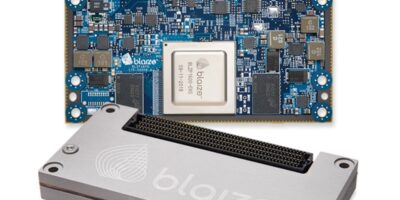Hand gestures can be recognised by the MAX25405 next-generation optical sensor to ensure that a driver’s eyes remain on the road. The optical sensor recognises a variety of gestures in a quarter of the size and at 10x lower cost than camera-based time of flight systems in automotive, industrial and consumer applications, says Maxim Integrated.
The MAX25405 detects a wider proximity of movement and doubles the sensing range to 40cm compared to earlier generations, in a form factor that is a quarter the size of camera-based systems in automotive, industrial and consumer applications. According to Maxim, these enhancements offer an alternative to voice communications, enabling drivers to focus on the road.
The MAX25405 has integrated optics, a 6 x 10 infra red sensor array and a glass lens which increases sensitivity and improves the signal to noise ratio. The improved performance doubles the proximity and distance of sensing applications so that passengers in the front and rear seats can be also operate entertainment displays, for example, with gestures. There is a high level of integration compared to competitive ToF solutions that require three chips and a complicated microprocessor.
The MAX25405’s small 20-pin, 4.0 x 4.0 x 1.35mm quad flat no-lead (QFN) package together with four discrete LEDs measures up to 75 per cent smaller than ToF camera-based solutions.
The MAX25405 recognizes nine gestures, including swipe, rotation, air-click, linger to click and 3 x 2 proximity zones with minimal lag time. It is affordable for use in multi-range automotive, consumer and industrial applications, including touch-free smart home hubs and thermostats.
The MAX25405 gesture sensor and associated MAX25405EVKIT# evaluation kit are available now.
Maxim Integrated has a broad portfolio of semiconductors, tools and support, to delivers analogue solutions including efficient power, precision measurement, reliable connectivity and robust protection along with intelligent processing for automotive, communications, consumer, data centre, healthcare, industrial and IoT applications.







